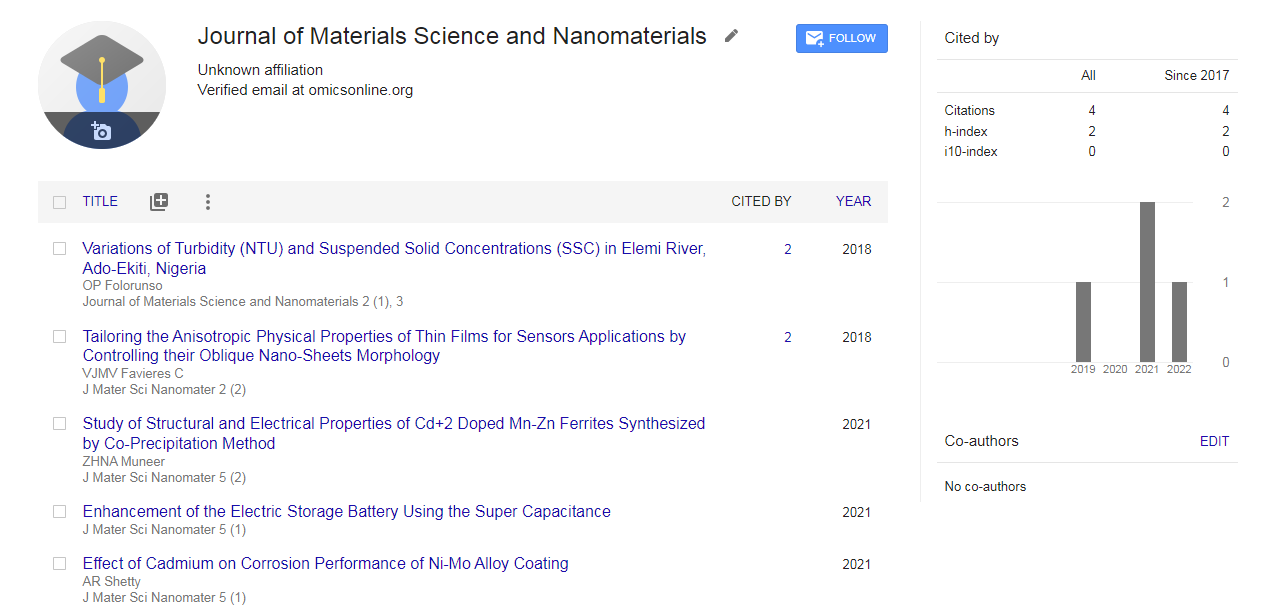Synthesis and Characterization of Reduced Graphene Oxide Supported Ag/PANI Nanocomposite as Electrochemical Sensor for the Detection of Selected Toxic Heavy Metals
*Corresponding Author:
Copyright: © 2020 . This is an open-access article distributed under the terms of the Creative Commons Attribution License, which permits unrestricted use, distribution, and reproduction in any medium, provided the original author and source are credited.
Abstract
Reduced graphene oxide supported Ag/PANI nanocomposite electrochemical sensor was synthesized through electrochemical methods from electrochemical polymerization of 0.2M aniline monomer in 1M HCl and electrodeposition of silver nanoparticles from AgNO3on a reduced graphene oxide modified bare electrode. The as synthesized (Ag/PANI/RGO) nanocomposites modified electrode was further characterized by Cyclic Voltammetry. The results show that Ag/PANI/ RGO nanocomposite was the highest electroactive substrate than PANI and PANI/RGO. This is due to reduced graphene oxide and synergetic effects as well as electrocatalytic properties of silver nanoparticles. For comparing and as well as for spectroscopic characterization; PANI, PANI/RGO and Ag/PANI/RGO nanocomposites were synthesized by chemical precipitation methods using APS, (NH4)2SO4 as an oxidant and characterized by CV, FTIR, SEM, XRD and UV-Vis and the results showed that a comparable electrochemical properties, optical and structural properties and uniform distribution of silver nanoparticles on the surface of PANI/RGO were observed on SEM micrographs. Fast electron transfer properties were calculated from standard rate constant for electrochemically and chemically synthesized (Ag/ PAN/RGO) nanocomposite sensor were koof 71.3x10-3s-1 and 63.9x10-3s-1, respectively. This (Ag/PANI/RGO) nanocomposite electrochemical sensor was carefully tested with the help of anodic stripping voltammetric process as results; linear regression coefficient (R2) of 0.9990 and 0.9977 for Pb2+ and Cd2+, respectively, were obtained. The results have shown that for surface water, specifically for Cd has higher value than the WHO (2008) recommended maximum admissible limits. This is an indication of pollution hazards and weak drinking water treatment practices in the areas, which in turn have important human health implications. Therefore, the government and other responsible authorities to take appropriate corrective measures.

 Spanish
Spanish  Chinese
Chinese  Russian
Russian  German
German  French
French  Japanese
Japanese  Portuguese
Portuguese  Hindi
Hindi 